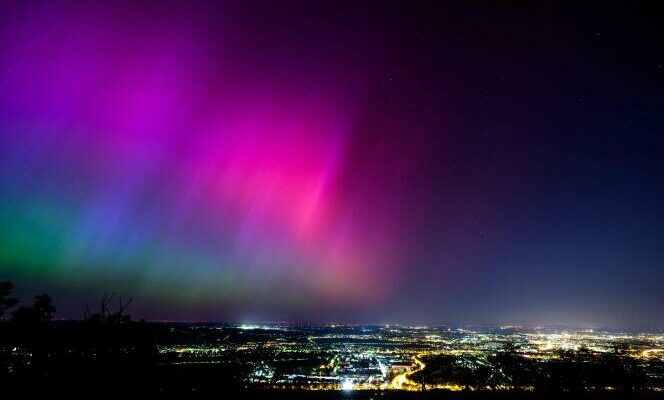The phenomenon was expected in 2024, hoped for by some, feared by others. As the Sun’s activity cycle, with an average period of eleven years, approaches its maximum, an explosion on its surface has caused a solar storm of a level not seen in more than twenty years.
The spectacular consequences of this phenomenon were visible during the night of Friday May 10 to Saturday May 11, in the form of the Northern Lights at exceptionally low latitudes. Particles, ejected during these eruptions 150 million kilometers from Earth, ionize the upper layers of the Earth’s atmosphere, under the effect of the magnetic field, to cause these astonishing diaphanous colors in the sky.
These northern lights have been seen in Europe and France, even in the Paris region. Numerous photos of these exceptional phenomena have been published on social networks by amazed amateurs.
NASA announced on Thursday May 9 to expect such events, after observing these explosions on the surface of the Sun. The flares eject immense quantities of material from the star which then disperse. These coronal mass ejections – at least seven of which have been observed directed towards Earth – come from a sunspot approximately 17 times the diameter of Earth. They move at several hundred kilometers per second.
Disturbances
Other consequences of such an event, less aesthetic, are possible. The American Oceanic and Atmospheric Observation Agency announced Friday evening that it had observed the conditions linked to a level 5 geomagnetic storm, the maximum level on the scale used. Clearly, satellite and ground communications networks, navigation systems such as GPS and radio broadcasts may be disrupted.
In the United States, NASA had alerted operators of communications satellites and the electricity network in North America earlier this week of the risks of disruptions. These (none had yet been reported as of Saturday morning) may occur for a few days. Like the Northern Lights, since all the effects of this solar storm have not yet reached the Blue Planet.
The last event reaching this level 5 dates back to October 2003, an episode nicknamed “the storms of Halloween”. At the time, power outages occurred in Sweden, and transformers were damaged in South Africa.
Cycle 25 of the Sun, which began in December 2019, was expected to reach its maximum in 2025, without it being anticipated as an exceptional peak. These breathings of our star are not regular. But, from the end of 2023, the agitation noted by the Sun observation satellites allowed astronomers to announce that the peak of cycle 25 would be stronger than expected and would undoubtedly occur earlier. We were then talking about the second half of 2024. It is too early to know if this event is a precursor to a next peak of activity, or if it marks the maximum before the ebb.
